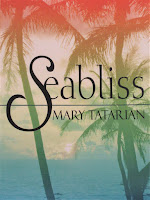Feeling lonely? I think all of us do at the moment. We know we have to remain isolated until this health crisis passes. But what if your normal way of life was far from civilization as we know it, while living among a small group of people without many of the amenities to which we have all become accustomed.
My thoughts take me back to a beautiful island in the Pacific I discovered while on a cruise. Pitcairn Island is the main island and only inhabited island in a group of four small volcanic islands that constitute The Pitcairn Islands Group, a British Overseas Territory. I have to admit I had never heard of them by name before, but had heard of its founder Fletcher Christian. After meeting and listening to the islanders who came by boat to visit our cruise ship, because their tiny island would be overwhelmed if we all went ashore, Pitcairn is not only historical but quite a scenic island with a remarkable way of life.
Pitcairn is located about 1,300 miles from Tahiti and equal distance from Easter Island in the opposite direction, making this is one of the most isolated inhabited islands in the world.
We’ve all see one of the movie versions of “Mutiny on The Bounty” but a visit with island inhabitants brings the story to life. Twenty men mutinied against their captain, William Bligh, on April 18, 1789, two hundred thirty one years ago this month. They took command of the ship, The HM Armed Vessel, The Bounty. Remains of the Bounty can be seen in Bounty Bay if you are lucky enough to stay on this remote island.
 |
About eight and one half months after the mutiny, Fletcher Christian led a small group of mutineers accompanied by six Polynesian men, twelve Polynesian women, and one infant. They decided to stay and inhabit the island because Christian felt there was little chance of anyone finding them there. He was right!
Today there are about sixty residents, the majority descendants of the nine mutineers.
Since the island did not have a facility capable of docking a cruise ship not even a small one, the Pitcairn Islanders come to our ship in a large motorized open boat. On our cruise, they informed us through a presentation with photos about their island life style and ancestry
Everyone on the Island speaks English fluently. They told us they try to remain as self- sufficient as possible. They grow their own vegetables and catch fish. Sweet potatoes, arrowroot, beans, tomatoes, pineapples and melons are found in most gardens while fish favorites include white grouper, wahoo, tuna, and red snapper.
Since the island did not have a facility capable of docking a cruise ship not even a small one, the Pitcairn Islanders come to our ship in a large motorized open boat. On our cruise, they informed us through a presentation with photos about their island life style and ancestry
Everyone on the Island speaks English fluently. They told us they try to remain as self- sufficient as possible. They grow their own vegetables and catch fish. Sweet potatoes, arrowroot, beans, tomatoes, pineapples and melons are found in most gardens while fish favorites include white grouper, wahoo, tuna, and red snapper.
They barter among themselves and share whatever supplies they can obtain from passing freighters. Their main products are handicrafts; baskets and carvings especially of wildlife made from Miro wood. Of course their postage stamps are of interest to collectors and their honey is in high demand.
Our speaker showed us photos of the island Post Office, General Store, Museum, Church and Medical Center. The islanders appreciate the natural beauty of their island as well as the neighbors who surround them.
It’s a very special way of life and one that the islanders hope to keep alive because of the history and ancestry of the island. I was fortunate to meet quite a few of them. My husband photographed many of them.
 |
| The Islanders join us by boat |
Their carvings and handicrafts are very special. I bought a small carved dish out of Miro wood from one of Fletcher Christian’s descendants who signed the bottom, some woven palm holiday ornaments, and a small Miro wood fish. The woman selling the fish said she creates these with her thirteen year old son and that the island is happy to welcome cruise ships where they can tell people about their way of life and sell their beautifully made crafts. I mailed two postcards with their unusual stamps. I was told it could take up to four months to reach the US since the mail has to wait for a ship to take it to New Zealand first.
Amazing is the only word that sums up my experience with these beautiful people. I am grateful for the opportunity to meet and talk with them.
My heroines have experienced moments of loneliness but not of their own choosing and not to such a degree. Amelia in "The Duchess’ Necklace” had to hide from her vindictive relatives hoping to take her title from her, while Danielle in “Shadows Across Time” felt alone being held a captive by a scheming French queen in the dungeon of Chenonceau Castle.
Right about now I’m sure we all wish we could all meet a handsome hero and Time Travel to a safer and healthier time; perhaps escape like my two heroines, but please stay safe and stay healthy.
Right about now I’m sure we all wish we could all meet a handsome hero and Time Travel to a safer and healthier time; perhaps escape like my two heroines, but please stay safe and stay healthy.
I hope you will take a moment to visit my Book website for Great Reads!
Thanks! Mariah











